1. Analytics, called "Insights For Your Domain"
1.1. Track numbers of users, volume of content shared, site response time
1.1.1. This works the same for Pages on facebook and your own web content that implements the Open Graph Protocol
1.1.1.1. Doing this requires setting fb:admins or fb:app_id in your RDFa meta tags
1.1.1.2. You also need to tell facebook about your page
1.1.2. For pages, this means new and removed fans, as well as how many users are displaying publicly that they're your fans
1.1.3. You also get info on how many visitors your page got, how many of your stories they read, how many wall comments, and other interaction metrics
1.1.4. You can also access demographics data and referrer info
1.2. Detailed demographics of users and how they are sharing application
1.3. Doesn't compete with Google Analytics yet in detailed traditional analytics
2. Facebook credits
2.1. Payment system for facebook apps
2.2. You can earn credits through credit-card reward programs or other methods
2.3. Facebook has official help on this for end users
3. Open graph protocol
3.1. Lets people establish relationships with any page on the web
3.2. Lets you represent anything (restaurant, person, movie) with a page and tell facebook "this is that thing," the way you used to with facebook pages
3.3. Basically makes all pages potentially "facebook" pages
3.3.1. This means that you can publish activity stream updates from anywhere
3.4. The Open Graph protocol enables you to integrate your web pages into the social graph. It is currently designed for web pages representing profiles of real-world things — things like movies, sports teams, celebrities, and restaurants. Once your pages become objects in the graph, users can establish connections to your pages as they do with Facebook Pages.
3.5. Powers the social plugins
3.6. Powered by RDFa
3.6.1. Gives pages semantics, so facebook can bucket them
3.6.2. Lets facebook connect content objects on disparate sites (e.g., bands on pandora and last.fm)
3.6.3. This is a big incentive for sites to encode real semantic-web data into their content
3.6.3.1. This is also a big step toward a web-wide recommendation engine
4. Instant Personalization
4.1. Lets sites access certain personal data about users without those users giving access through facebook connect
4.2. Allows sites to customize for users automatically
4.3. This has caused some backlash, according to RWW
4.4. This is partner-only currently
5. Social bar
5.1. Rests at the bottom of the browser
5.2. Lets users share and chat
5.2.1. A "kitchen sink" of user tools
5.2.1.1. Chat
5.2.1.2. Activity Stream
5.2.1.3. Likes
5.3. Code for this is available on GitHub
5.4. Not widely rolled out yet
5.5. This is probably another social plugin
6. Open Graph API
6.1. Allows developers to access data from facebook's graph
6.1.1. Friends
6.1.2. Pictures
6.1.3. Likes
6.2. Allows third-party sites to import user graph data
6.2.1. Lunch.com is using Facebook "like" data to enhance its recommendation engine
6.3. Works in conjunction with the new authentication system based on OAuth 2.0 to securely authorize sites to access graph data
7. Social plugins
7.1. Like button
7.1.1. Any web page or object on a webpage can be "liked" and this is reported to your news feed
7.1.2. Makes it super easy to broadcast that you think something is cool to your friends
7.1.3. Has special added functionality for real-world objects that have been enhanced with the open graph API
7.1.3.1. "Your pages show up in more places on Facebook and you gain the ability to publish stream stories to connected users"
7.1.4. Automatically personalized for logged-in facebook users to see what their friends have liked
7.2. Activity Feed
7.2.1. Shows people what their friends are doing on your site
7.2.2. Recommendations tells people what else they should do on your site (probably powered by their friends)
7.3. Login with Faces
7.3.1. Shows users who of their friends already use your site and lets users login to your site
7.3.2. Gives your site added access to a user's personal information
7.3.2.1. By default, you get a user ID and their default personal info (name, profile pic, friends)
7.3.2.2. You can request additional access to things like the user's photos or email address, but the user has to grant this
7.3.2.3. Uses OAuth 2.0 and can be done from either server or client side
7.3.3. Allows sites to authenticate users for single-signon purposes as well
7.3.3.1. This replaces facebook connect
7.4. Facepile
7.4.1. Shows people who of their friends already uses your site
7.4.2. Has a really bad name
7.5. Comments
7.5.1. Lets users comment on any of your content
7.5.2. Lets users share their comments to their own walls and thereby in their activity streams
7.6. Livestream
7.6.1. Lets people share and comment in realtime for live events
7.7. Like Box
7.7.1. Allows you to embed the activity stream from your Facebook page on your website
7.7.2. Lets users directly like your facebook page from your site
8. Criticisms
8.1. Technology is only sorta-open
8.1.1. The metadata is encoded in an open-web, standards-friendly way (RDFa)
8.1.2. Protocol was released in an IP friendly way
8.1.3. The activities are sent through proprietary APIs and are stored entirely in facebook's closed database
8.2. Privacy-policy changes were handled in a way that scared users
8.2.1. Several Web industry leaders have very publicly left facebook over the privacy row
8.2.2. The new API keeps leaking private user information
8.2.3. Facebook leadership has been taking heat and having to respond in public about the changes
8.2.4. Vaporware competitors have been getting an unusual amount of buzz by claiming to create "privacy-centered" networks
8.3. Privacy Flaws are emerging in the API
8.3.1. According to the Guardian, it is possible to access private information about people's attendance of events through the graph API

